How Is Exhaust Flame Color Paste Made?
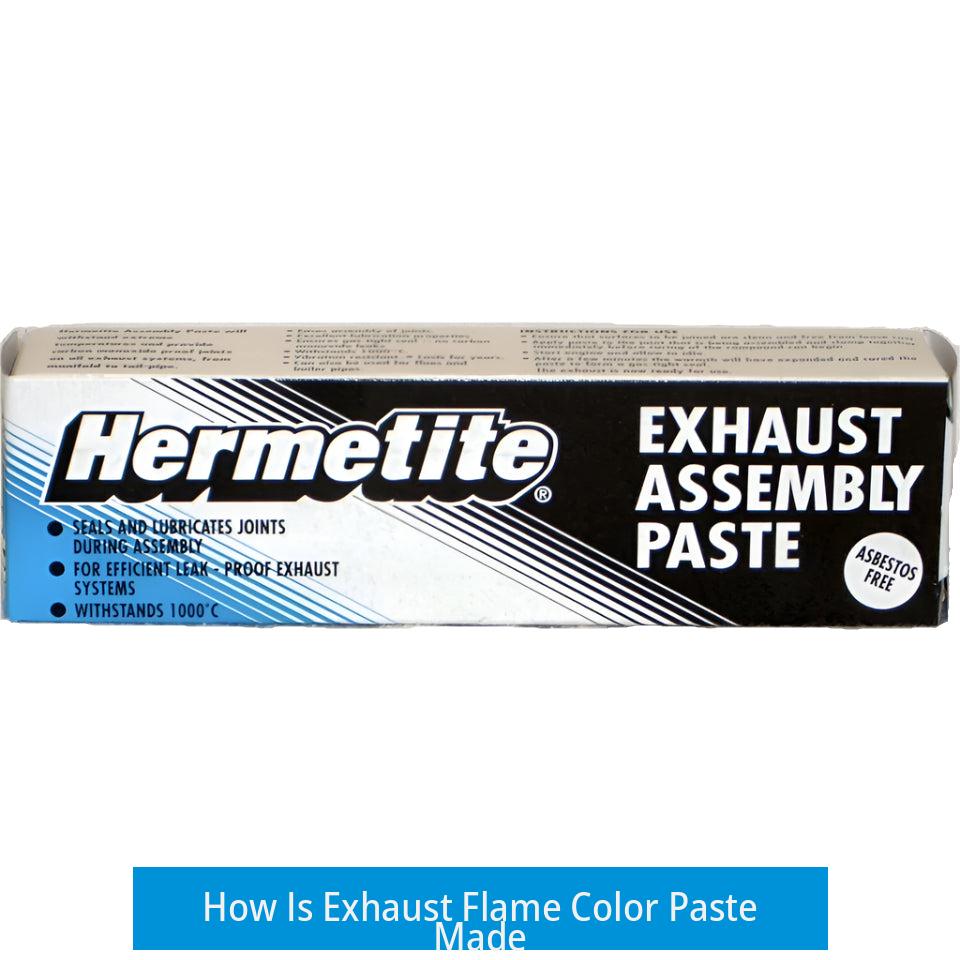
The exhaust flame color paste is typically made by mixing metal salts with a solvent to create a format that burns and emits distinctive colors when heated in an exhaust system. Metal salts, when combusted, release characteristic wavelengths of light that produce specific flame colors.
Metal Salts and Flame Color
Different metal salts result in different flame colors due to their unique emission spectra. For example:
- Sodium salts produce an orange-yellow flame.
- Copper salts generate a green flame.
- Strontium salts emit a red flame.
- Potassium salts create a lilac flame.
- Magnesium salts yield a white flame.
The color change results from the excitation of metal ions when exposed to heat. This mechanism is similar to the coloring agents used in fireworks.
Basic Preparation of the Color Paste
To make the flame color paste, a metal salt, such as strontium chloride for red flames, is mixed with a volatile solvent. Acetone is commonly used due to its rapid evaporation and flammability. The mixture forms a paste suitable for application to the exhaust pipe or introduction into the flame stream.
Demonstration of Metal Salt Flame Colors
“A wire loop dipped in table salt placed in a flame turns the flame yellow due to sodium. Using potassium or copper salts changes the flame color to lilac or green, respectively.”
This simple experiment confirms how different salts impart different flame colors.
Application and Compatibility
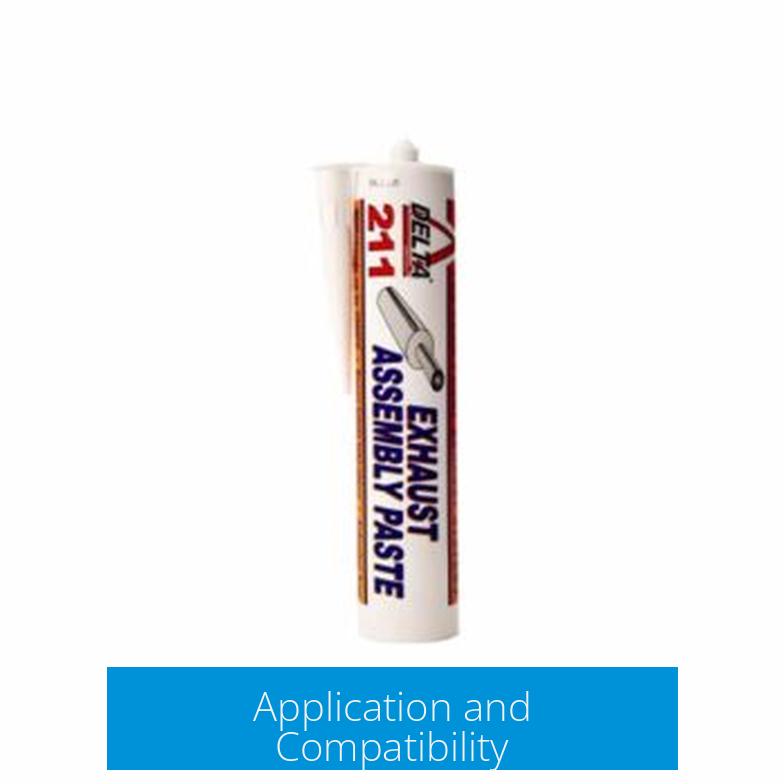
This flame color technique is mainly used in gasoline-powered vehicle exhausts. Its effectiveness on diesel engines is less certain, but enthusiasts report mixed results on trucks such as Volvo FH 13. The presence of unburned hydrocarbons and exhaust temperature influence the visibility and intensity of flame colors.
Summary of Key Points
- Flame colors come from metal salts emitting characteristic wavelengths when heated.
- Strontium chloride is commonly used for red flame paste mixed with acetone.
- Other metal salts such as sodium, copper, and potassium create distinct colors.
- The preparation involves dissolving metal salts in a volatile solvent to produce a burnable paste.
- Effectiveness on diesel trucks varies depending on engine and exhaust conditions.
How Is This Exhaust Flame Color Paste Made? The Fiery Science Behind the Glow
If you’ve ever wondered how is this exhaust flame color paste made?, the answer lies in a clever blend of chemistry and combustion. It’s a simple yet fascinating process that turns your vehicle’s exhaust into a dazzling light show by using metal salts combined in a paste. As the exhaust gases burn the paste, these salts emit brilliant colors—turning boring exhaust pipes into fireworks of metal magic.
Let’s unpack the process. First, some chemistry basics: when atoms get heated, they jump to excited energy states and release light as they return to their normal state. The color of that light depends on the metal’s unique electron configuration. This effect is the core reason that different metal salts produce distinctly colored flames when heated.
The Colorful Role of Metal Salts
What makes those exhaust flames pop with color? Metal salts! These are chemical compounds containing metal ions that respond vividly to heat. Sodium salts, for instance, produce an unmistakable orange-yellow color. Copper salts light up green flames. Magnesium? That results in bright white flames. Imagine the exhaust pipe as a small fireworks stage and the metal salts as performers painting the flames. When the vehicle’s exhaust heats this paste, the metal salts vaporize and shine bright.
For a quick at-home experiment, you can use a simple wire loop dipped in table salt to test flame colors. Dip the loop in salt, then place it briefly in a blowtorch flame. The flame turns a striking yellow, courtesy of excited sodium. Swap table salt for potassium salts to see a lilac flame. Copper salts show a green glow. This practical demo reveals the science behind the sensational colors you can get from fire.
From Fireworks to Exhaust Pipes: A Shared Coloring Secret
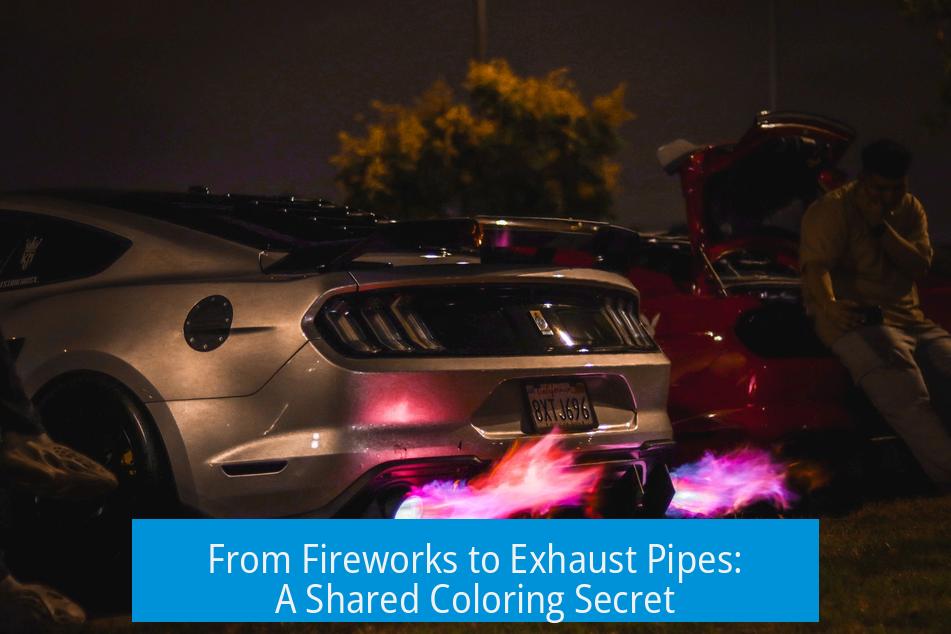
You may have noticed how fireworks burst in vivid reds, greens, blues, and more. That happens for the same reason—metal salts. Cool, right? The USGS explains in detail how minerals like strontium (for red) and copper (for green) give those brilliant hues. Exhaust flame color paste uses the same principle, just applied in a unique and mechanical way! While fireworks are controlled explosions of colored light, your car’s flame color paste slowly releases this colorful magic, lighting your exhaust with flaming shows.
Mixing the Magic Paste: What’s in It?
Wondering how to make the paste that works its magic? It’s surprisingly straightforward. A common recipe for a red flame is acetone combined with strontium chloride powder. Acetone acts as the carrier, or solvent, creating a smooth paste when mixed with the salt. Strontium chloride supplies that fiery red flame color. You apply this paste near the tailpipe or wherever the exhaust heat will ignite it.
This mixture burns cleanly, releasing strontium ions into the exhaust gases. Once heated, these ions produce vibrant red flames visible shooting from your pipe. The simplicity of acetone plus metal salt means this is an accessible DIY project for hobbyists and enthusiasts alike. However, handling chemicals always calls for caution—acetone is flammable, and strontium chloride needs proper handling.
Can Diesel Trucks Join the Flame Show?
What about using this on diesel trucks? One enthusiast with a Volvo FH 13 asked if the flame paste works on diesel engines. The answer is yes—though with some caveats. Diesel exhaust tends to be cooler than gasoline, so it might be harder to get the paste to ignite vigorously. Also, diesel engines often have particulate filters and other emission controls that can affect flame display.
That said, with enough heat and the right placement, diesel trucks can produce impressive flame effects. It just depends on the engine’s exhaust temperature and your setup. If flames from your truck’s tailpipe sound like a fun statement, testing paste mixtures carefully under safe conditions is the way to go. Remember: safety first!
Why Bother With Flame Colors? Beyond the “Cool” Factor
You might wonder, “Is this just a flashy gimmick?” Well, it’s entertaining but also a neat way to demonstrate fundamental chemistry in a real-world context. Using flame color paste combines science, creativity, and mechanics. Enthusiasts love showing off flame colors at car meets for that “wow” effect. It also echoes ancient science experiments that explore atomic structures through flame tests.
Plus, this humble paste opens a window into the world of combustion chemistry. It’s fun, educational, and transforms a vehicle’s exhaust from a mundane pipe into an expressive canvas. It’s vehicle personalization with a literal spark—who knew chemistry could make exhaust pipes so stylish?
Tips for Making and Using Your Own Flame Paste
- Use pure metal salts: Quality matters. Strontium chloride for red, copper chloride for green, sodium chloride for yellow.
- Mix with acetone carefully: Acetone helps create a paste that’s easy to apply but evaporates quickly when heated.
- Apply safely: Don’t coat too heavily—small amounts on heat-resistant surfaces near the exhaust work best.
- Observe local regulations: Emissions and safety rules may restrict flame use on vehicle exhausts.
- Test in controlled environments: Never try this on busy roads or enclosed spaces.
In summary, the exhaust flame color paste is made by mixing metal salts like strontium chloride with a solvent such as acetone, producing a compound that lights up in colorful flames when heated by the exhaust gases. This chemistry marvel translates the principles behind spectacular fireworks into a small, fiery spectacle for your ride. It is an accessible project that blends science with automotive flair, dazzling onlookers with dancing flames of red, green, yellow, or white.
So next time you see those stunning flames licking out of a performance car’s exhaust, you’ll know it isn’t magic—it’s chemistry with a splash of showmanship.


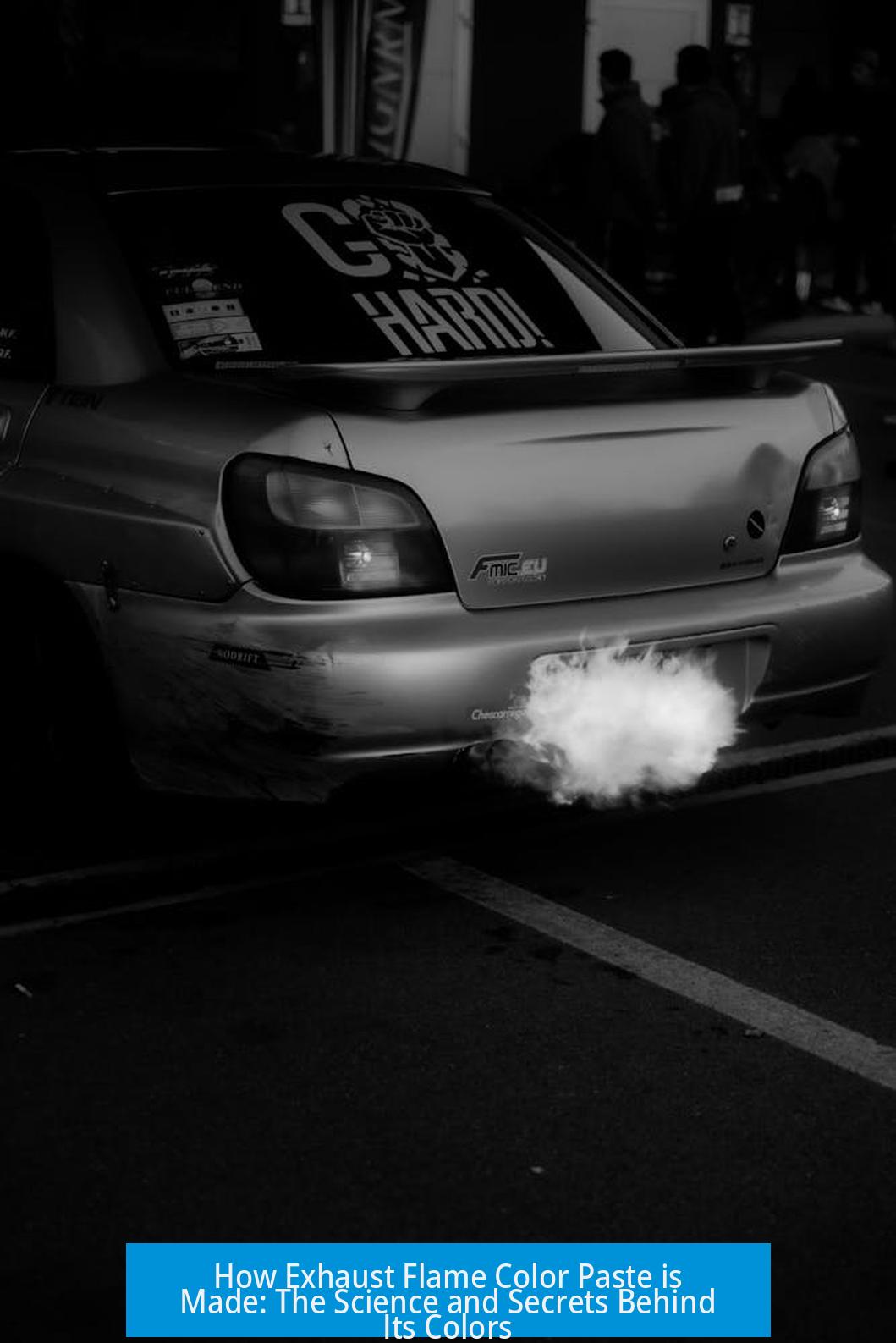

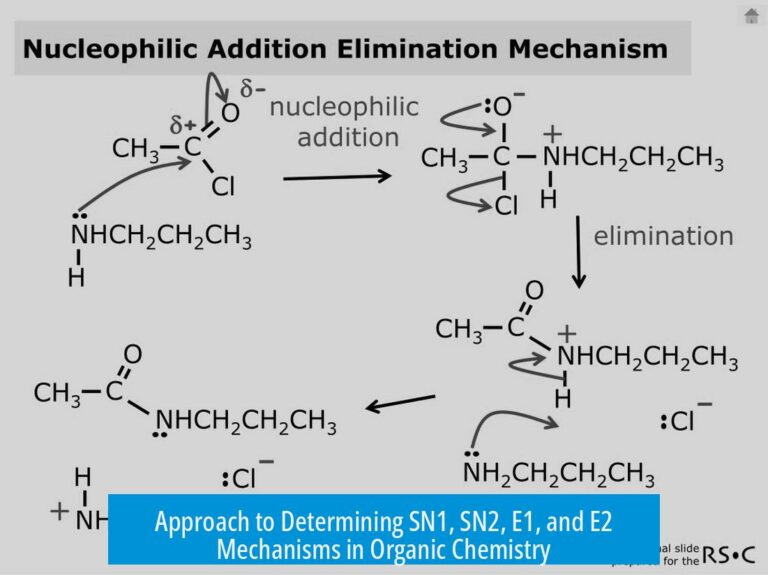
Leave a Comment